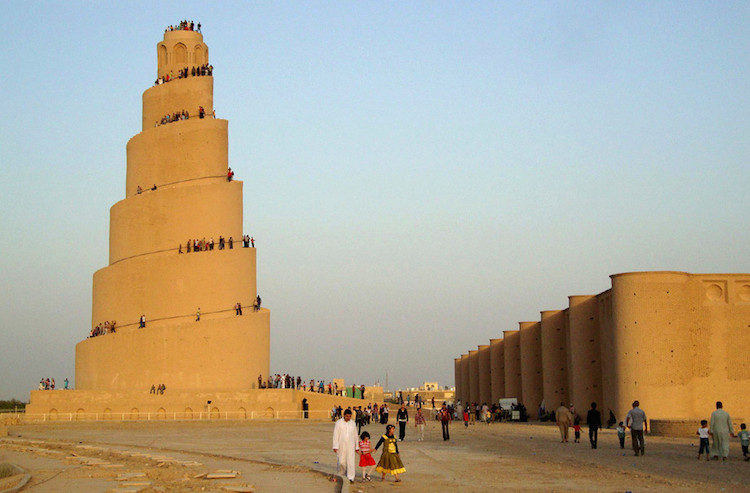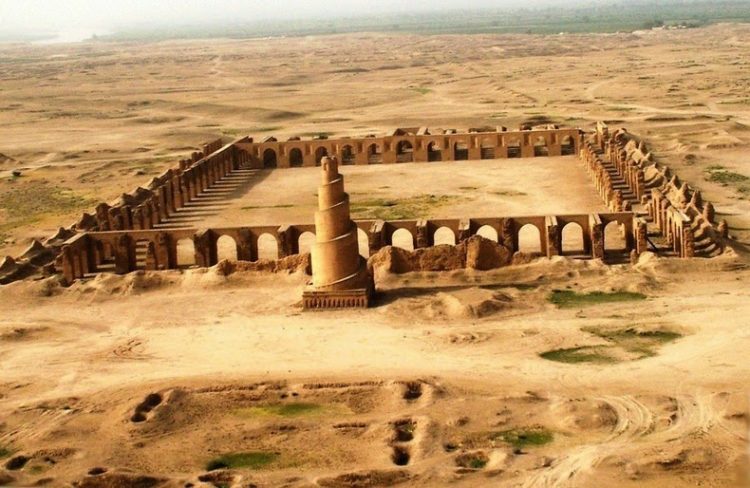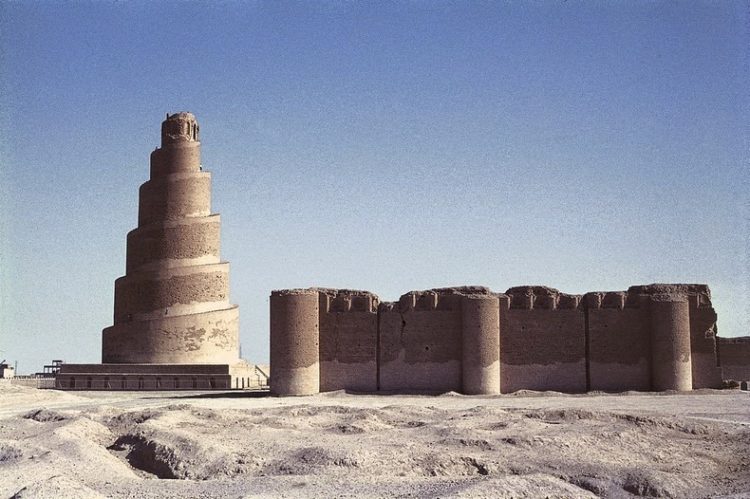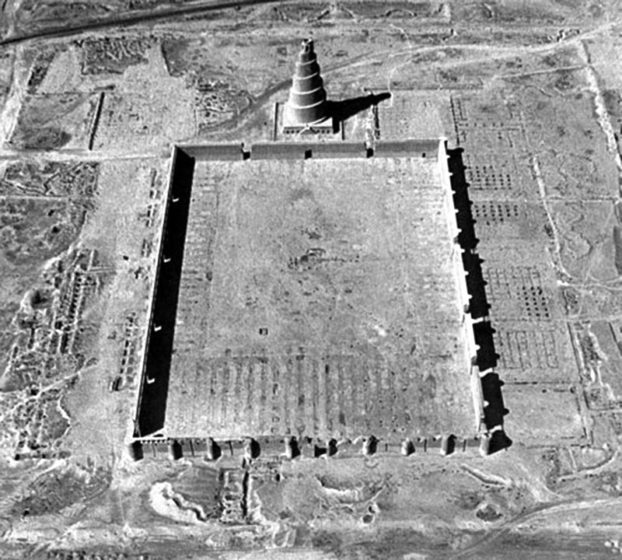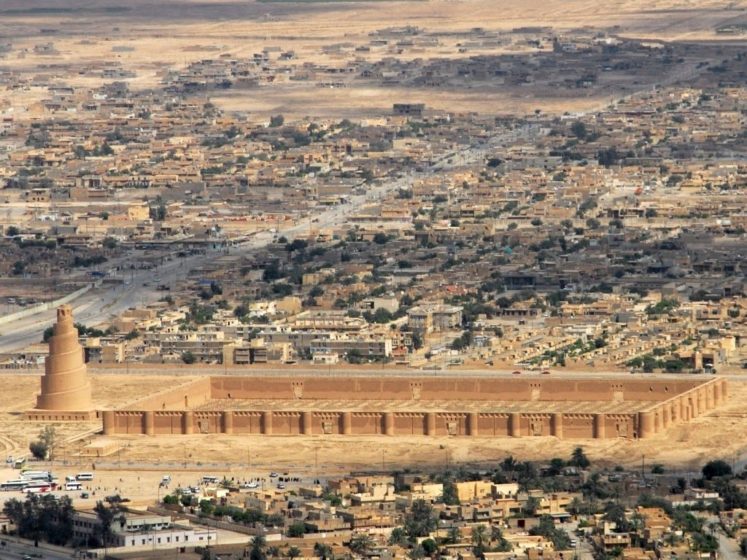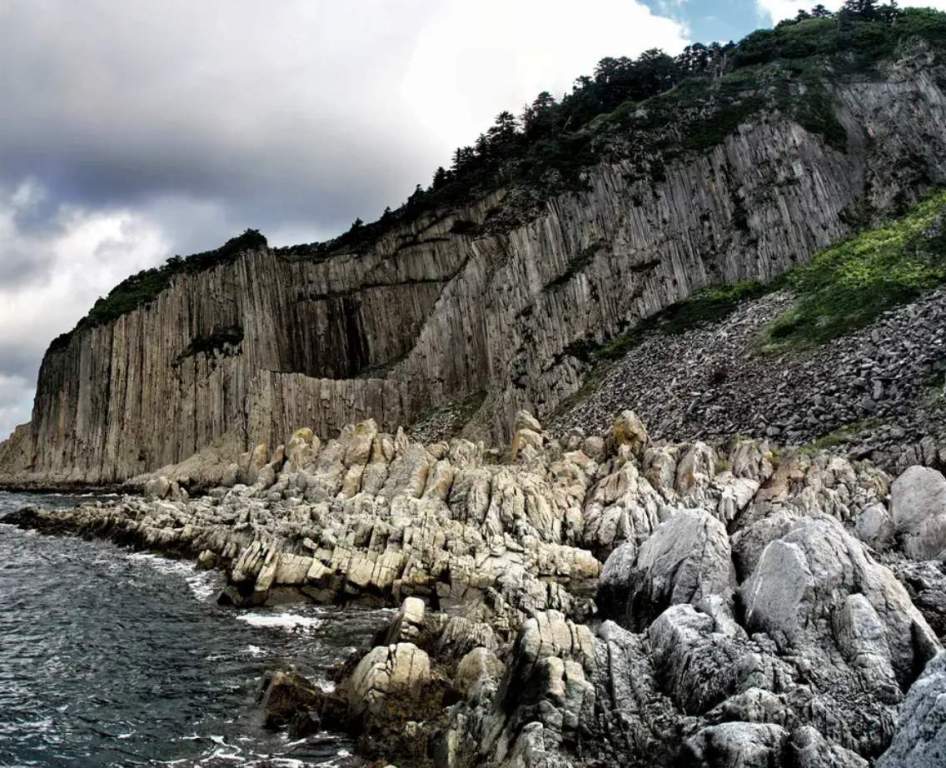The Great Mosque of Samarra is the most prominent structure, spiraling up from the ground. The Great Mosque of Samarra is located in Samarra city, Iraq, about 120 km north of Baghdad, on the banks of the river Tigris.
It is known as malwiya, this 180-foot tower was the main focal point of the Mosque. The snail shell minaret covered 42 acres at its peak and was 108 feet wide with a spiral ramp. The eye-catching Mosque was built in the 9th century by Abbasid caliph Al-Mutawakkil who reigned (in Samarra) from 847 until 861. In the 12th century, the Mosque was gradually destroyed and fell into disuse after Hulagu Khan’s invasion of Iraq.
However, only the outer wall and its minaret remained. The great mosque had 17 aisles, and its walls were paneled with mosaics of dark blue glass, the art and architecture of the mosque were influential; stucco carvings within the mosque in floral and geometric designs represent early Islamic decoration.
The Great Mosque was spread over an area of 17 hectares; the building itself covered 38,000 square meters. The Mosque surrounding the courtyard was a triple portico with octagonal columns. The practitioners could walk through the gates to enter the interior with its dense grid of pillars and teakwood roof. Thus, over each entrance were numerous arched windows, and in between the towers, square niches were placed along its facade.
The Malwiya Minaret was initially constructed with sandstone, used for the “call to prayer”. Although, its height made it more prominent and it is visible from a considerable distance in the area around Samarra and therefore may have been designed as a strong visual statement of the presence of Islam in the Tigris Valley.
The minaret’s unique spiral design was given a new life during the war in Iraq, as US troops used it for observation. Sadly, in 2005, the famous minaret was partially destroyed during a bombing raid by insurgents. After 1000 years of proudly standing in the medieval Abbasid capital, it finally began to crumble under the firepower of modern weaponry.
Therefore, the lifespan of the minaret could be dramatically shortened given the uncertain and unstable political situation in Iraq. Moreover, the mosque of Ibn Tulun in Cairo, Egypt was based on the Samarra mosque in many regards. Read More – The Sultan Mosque Singapore
